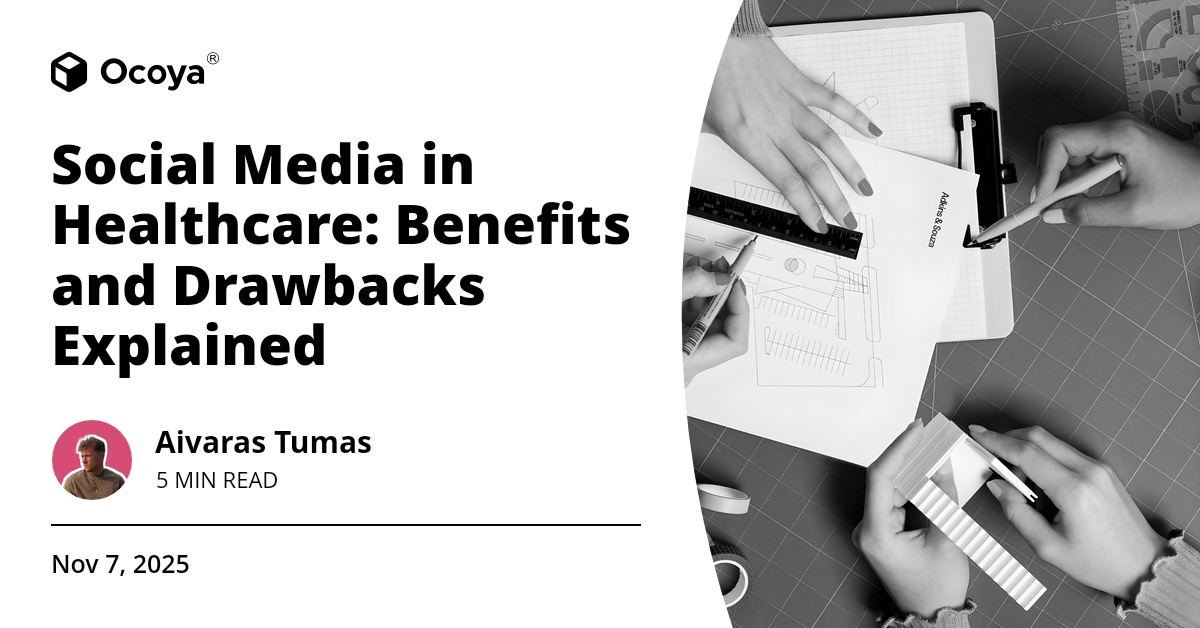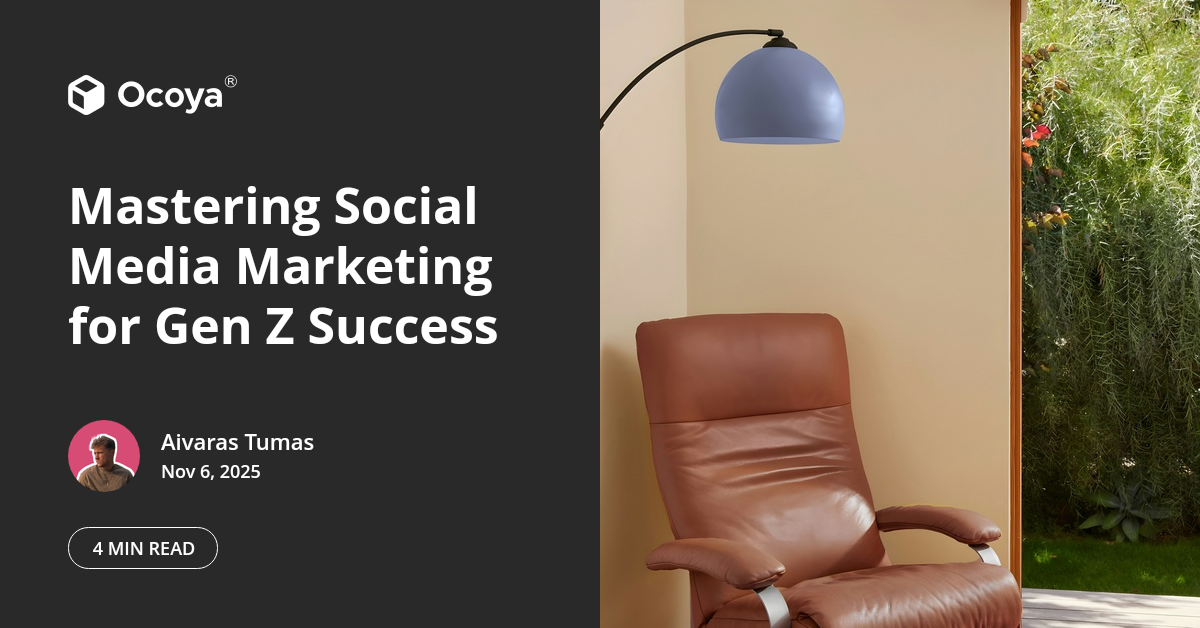
November 7, 2025
Marketing
Social Media in Healthcare: Benefits and Drawbacks Explained

The digital age has transformed society in innumerable ways, and the healthcare sector is no exception. Social media platforms such as Facebook, Twitter, LinkedIn, and Instagram have become powerful tools for healthcare professionals, institutions, and patients alike. These platforms have facilitated an unprecedented level of communication, education, and engagement. However, like any powerful tool, social media comes with its own set of advantages and disadvantages. In this article, we will delve into the pros and cons of social media in healthcare, providing a comprehensive understanding for both healthcare providers and consumers.
Advantages of Social Media in Healthcare
Enhanced Communication and Collaboration
One of the most significant advantages of social media in healthcare is its ability to enhance communication and collaboration. Medical professionals can now connect with peers and experts from around the world with just a few clicks. This ease of connectivity allows for the rapid exchange of information, which can be particularly beneficial in emergency situations or when seeking second opinions.
For instance, platforms like LinkedIn and Twitter have become virtual meeting places where healthcare providers share research findings, discuss treatment protocols, and collaborate on complex cases. This open exchange of information can lead to faster innovations and improvements in patient care.
Patient Education and Engagement
Social media also serves as an excellent platform for patient education and engagement. Healthcare providers can use social media to disseminate accurate and reliable health information, debunk myths, and provide updates on medical advancements. Educational content, such as blog posts, videos, and infographics, can be shared widely, reaching a larger audience than traditional methods.
Moreover, patient engagement is significantly enhanced through social media. Hospitals and clinics can use platforms like Facebook and Instagram to engage directly with their patients by responding to queries, providing updates, and even offering virtual consultations. This direct line of communication can make patients feel more connected to their healthcare providers, leading to increased trust and adherence to medical advice.
Marketing and Brand Building
For healthcare institutions and professionals, social media offers a powerful marketing tool. By maintaining active and engaging social media profiles, hospitals, clinics, and private practices can build their brands, attract new patients, and retain existing ones. A strong social media presence can serve as a form of social proof, reassuring potential patients of the quality and reliability of the healthcare services offered.
Additionally, targeted advertising on platforms like Facebook and Instagram allows healthcare providers to reach specific demographics, making marketing efforts more efficient and cost-effective. For example, a clinic specializing in elder care can target ads towards older adults in a particular geographic area, increasing the likelihood of attracting new patients.
Disadvantages of Social Media in Healthcare
Privacy and Confidentiality Issues
Despite its many benefits, social media in healthcare is not without drawbacks. One of the most significant concerns is the potential for breaches of privacy and confidentiality. Healthcare providers must navigate strict regulations, such as the Health Insurance Portability and Accountability Act (HIPAA) in the United States, which mandates the protection of patient information.
Even well-intentioned posts can inadvertently reveal sensitive patient information, leading to legal repercussions and loss of trust. For example, a doctor sharing a success story about a specific case must be careful not to divulge any identifying details. Ensuring that all social media activity complies with privacy laws is a critical but challenging task.
Misinformation and Unreliable Sources
Another significant drawback is the proliferation of misinformation and unreliable sources on social media. In the age of information overload, it can be difficult for patients to discern credible medical advice from false or misleading information. This issue is exacerbated by the fact that social media platforms prioritize content based on engagement rather than accuracy.
Misinformation can lead to dangerous health behaviors, such as the rejection of vaccines or the use of unproven treatments. Healthcare providers must actively combat misinformation by providing accurate and trustworthy content. However, this task can be overwhelming, especially when false information spreads rapidly and reaches large audiences.
Time and Resource Constraints
Maintaining an active and engaging social media presence requires significant time and resources. For healthcare providers who are already stretched thin, this can be a considerable burden. Creating high-quality content, monitoring accounts, and engaging with followers are all time-consuming tasks that may take away from direct patient care.
Additionally, smaller practices or individual providers may lack the resources to hire dedicated social media managers, leading to inconsistent or subpar social media activity. Balancing the demands of social media with the primary goal of providing excellent patient care is a delicate and ongoing challenge.
The Role of Social Media in Public Health Campaigns
Leveraging social media for public health campaigns has become increasingly common and effective. Whether it’s raising awareness about chronic diseases, promoting healthy lifestyles, or disseminating emergency information during an outbreak, social media platforms have proven invaluable.
Public health agencies can reach millions of people within hours, significantly more quickly than traditional media. Campaigns can be interactive, engaging the community through hashtags, challenges, and sharing personal stories. This type of engagement can make public health messages more relatable and memorable, increasing their impact.
Furthermore, the data generated from social media interactions can provide valuable insights into public sentiment and behavior, allowing public health officials to tailor their strategies accordingly. However, the challenges of misinformation and ensuring the reliability of shared content remain important considerations.
How Healthcare Providers Can Safeguard Their Social Media Practices
Developing a Social Media Policy
To minimize risks, healthcare organizations should develop comprehensive social media policies. These policies should outline acceptable use, content guidelines, privacy considerations, and the procedures for addressing any breaches. Employees should be trained regularly to ensure compliance.
A well-crafted social media policy can serve as a reference for employees, helping them navigate the complex landscape of online communication. For example, it can provide guidance on how to handle patient interactions on social media, what types of content are appropriate to share, and how to respond to negative feedback or comments.
Maintaining Professional Boundaries
Healthcare providers must also maintain professional boundaries on social media. While engaging with patients and the public is beneficial, it's crucial to keep interactions professional and respectful. Providers should avoid sharing personal opinions on controversial topics or engaging in heated debates, as this can damage their reputation and credibility.
Additionally, providers should be mindful of the potential for blurred boundaries between personal and professional lives. Using separate accounts for personal and professional use can help maintain a clear distinction and reduce the risk of inappropriate sharing.
Leveraging Tools for Efficiency and Compliance
Incorporating tools like Ocoya can significantly streamline social media efforts while ensuring compliance with privacy regulations. Ocoya offers automated content creation, post-scheduling, and detailed analytics, making it easier for healthcare providers to manage their social media presence efficiently. By using such tools, providers can maintain an active and engaging online presence without sacrificing the quality of patient care.
Sign up for a free trial at Ocoya to explore how it can enhance your social media strategy, optimize your content, and ensure compliance with healthcare regulations.
Case Studies: Successful Use of Social Media in Healthcare
Cleveland Clinic
The Cleveland Clinic is renowned for its robust social media strategy. By sharing a mix of educational content, patient stories, and health tips, the clinic has built a large and engaged following. Their use of multimedia content, such as videos and infographics, has helped them disseminate complex medical information in an easily digestible format.
The clinic also actively engages with followers by responding to comments and questions, fostering a sense of community and trust. Their success demonstrates the potential of social media to enhance patient education and engagement when managed effectively.
Mayo Clinic
The Mayo Clinic has also effectively leveraged social media to enhance its reputation and reach a global audience. Their strategy includes a strong presence on multiple platforms, including Facebook, Twitter, LinkedIn, and YouTube. The clinic shares a diverse range of content, from research updates to patient success stories, aiming to educate and inspire their audience.
One notable aspect of the Mayo Clinic's approach is their use of live streaming for events and Q&A sessions with healthcare professionals. This interactive format allows for real-time engagement and provides valuable information to viewers, further establishing the clinic as a trusted source of medical knowledge.
Looking Forward: The Future of Social Media in Healthcare
As technology continues to evolve, the role of social media in healthcare is likely to expand and become even more integral. Emerging trends such as telemedicine, virtual reality, and artificial intelligence are poised to enhance social media's impact on healthcare.
For example, telemedicine consultations could be seamlessly integrated with social media platforms, providing patients with easier access to healthcare services. Virtual reality could offer immersive educational experiences, while artificial intelligence could personalize content and improve engagement.
However, it will be essential to address the challenges that come with these advancements, particularly regarding privacy, security, and the accuracy of shared information. Healthcare providers must stay vigilant and proactive in adapting to new technologies and maintaining ethical standards.
Conclusion
The pros and cons of social media in healthcare are numerous and multifaceted. While social media offers unparalleled opportunities for communication, education, and marketing, it also presents challenges related to privacy, misinformation, and resource allocation. By understanding these advantages and drawbacks, healthcare providers can make informed decisions about their social media strategies and leverage these platforms to benefit both their practices and their patients.
Ultimately, the key to successful social media use in healthcare lies in balancing innovation with caution, ensuring that the benefits outweigh the risks. With the right tools and strategies, social media can be a powerful ally in improving healthcare delivery and patient outcomes.
Optimize your social media strategy and ensure compliance with healthcare regulations by signing up for a free trial at Ocoya. Embrace the future of healthcare communication and engagement with confidence.
Key Takeaways
- Enhanced communication and collaboration: Connect with peers and experts globally for faster information exchange.
- Patient education and engagement: Disseminate reliable health information and engage directly with patients.
- Marketing and brand building: Use social media to build your brand and attract new patients.
- Privacy and confidentiality issues: Navigate regulations to protect patient information.
- Misinformation and unreliable sources: Combat misinformation with accurate content.
- Time and resource constraints: Balance social media demands with patient care responsibilities.
- Public health campaigns: Leverage social media for effective and rapid public health messaging.
- Developing a social media policy: Outline guidelines to ensure compliant and effective social media use.
- Professional boundaries: Maintain professionalism in all social media interactions.
- Leverage Ocoya: Streamline social media efforts with automated content creation and post-scheduling tools.

Continue Reading
The latest handpicked blog articles.



.svg)

.svg)






